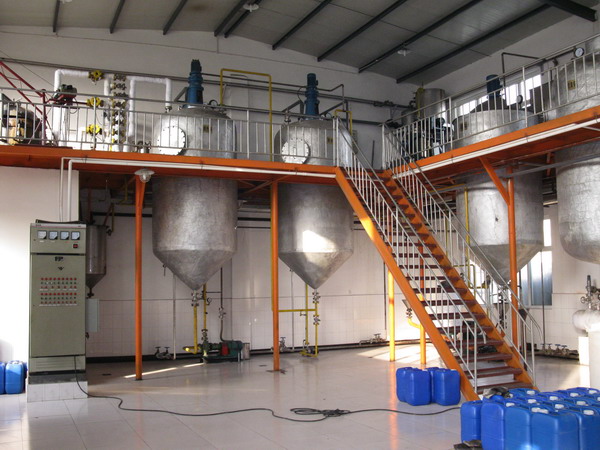Oil refining is a process of edible oil processing. Its main task is to produce high-quality refined oil. How to improve the oil refining rate and reduce consumption are two contradictory aspects, and it is also the key to the production technology of refining equipment. For most oil products, the refining process usually includes degumming, deacidification, decolorization and deodorization. The purpose and operation requirements of each process are different, and the technical problems encountered in production are also different. We Zhongxing Grain and Oil Machinery Co., Ltd. now makes a brief analysis of several common technical problems in these processes for the reference of colleagues.

1. Degumming
Degumming is considered to be one of the important links in the refining process. An effective degumming operation will help ensure the quality of the refined oil and reduce losses. Because the presence of gum will reduce the edible quality of the oil, and increase the amount of clay used in the decolorization of the oil, if there is still gum before deodorization, the oil will have a serious odor and affect the stability of the oil.
2. Deacidification
Deacidification is also the main process of oil refining. Chemical or physical methods can be used to remove free fatty acids in oils. Alkali refining (neutralization) is usually used in oil plants to remove such impurities in oils, so as to lay a good foundation for oil decolorization, deodorization, hydrogenation and deep processing of oil products. Alkaline refining can improve the quality of fat, increase its stability, and prolong the storage period.
However, in addition to the neutralization reaction with fatty acids, the lye will also react with a small amount of triglycerides to produce glycerin and soap, causing an increase in refining consumption. Therefore, the process conditions must be selected to reduce refining consumption. The main factors that affect the effect of the alkali refining process are: the type of alkali, the amount of alkali, the concentration of the alkali solution, the metering of the alkali, the operating temperature, the alkali adding speed, the stirring speed and so on. These factors are interrelated, and the process parameters need to be considered comprehensively according to the process type, equipment condition and crude oil quality.
3. Decolorization
Most oil refining processes use adsorption decolorization, that is, the pigment in the oil is adsorbed by the decolorizing agent (bleaching earth or activated carbon) under certain process conditions. The main process conditions are temperature, time, working pressure and the amount of decolorizing agent. . It should be pointed out that factors such as price, activated carbon and oil-carrying rate should be considered comprehensively when choosing decolorizing agent.
4. Deodorization
The mechanism of oil deodorization is based on the fact that the vapor pressure of odor components is much greater than that of triglycerides under the same conditions, so that the two are separated by distillation.
Due to the poor volatility and low content of odorous substances in oil, high temperature, high vacuum and other conditions are required to achieve a good deodorization effect. According to the distillation principle, increasing the temperature, increasing the vacuum degree, increasing the amount of water vapor and prolonging the deodorization time are all conducive to the progress of deodorization and are effective means to improve the deodorization effect. However, in actual operation, the coordination between these conditions and the overall cost must be considered.
Copyright © Henan Zhongxing Grain And Oil Machinery Co.,Ltd. All Rights Reserved. Powered by MetInfo